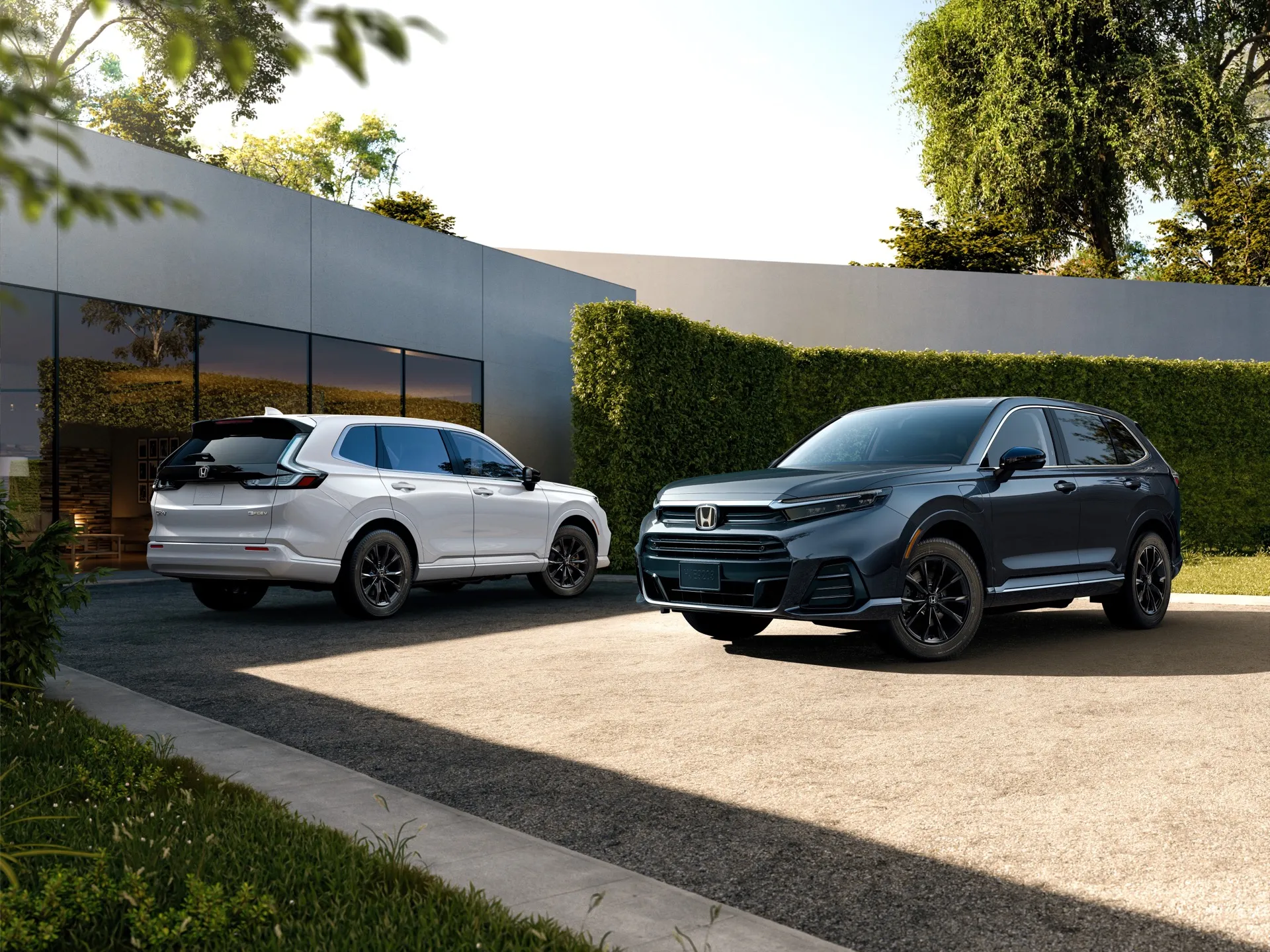Honda on Tuesday revealed a new electrified version of its 2025 Honda CR-V that can go 29 miles, powered only by a battery pack. Then, another source can kick on, providing power for longer trips.
While the formula might sound familiar, what’s different, in the case of what’s set to be badged the CR-V e:FCEV, is that the longer-range power source isn’t a gasoline engine. It’s a hydrogen fuel-cell system.
According to Honda, the CR-V e:FCEV will offer 29 miles of driving on a plug-in battery pack, then hydrogen fuel-cell propulsion will power the same electric motor system for another 241 miles—for a total of 270 miles.
2025 Honda CR-V e:FCEV
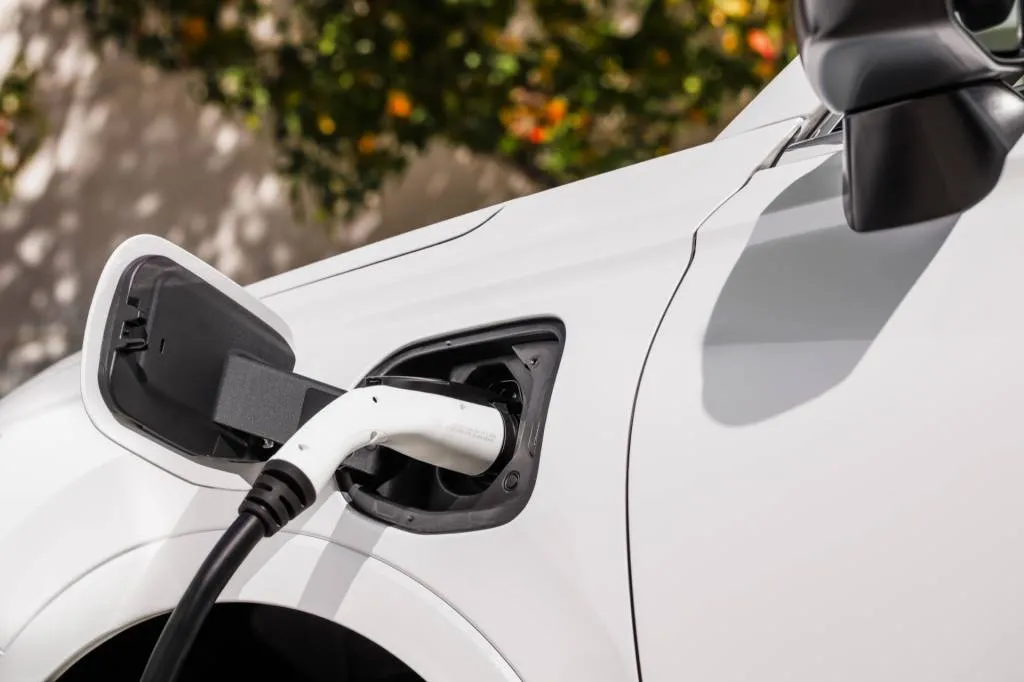
2025 Honda CR-V e:FCEV
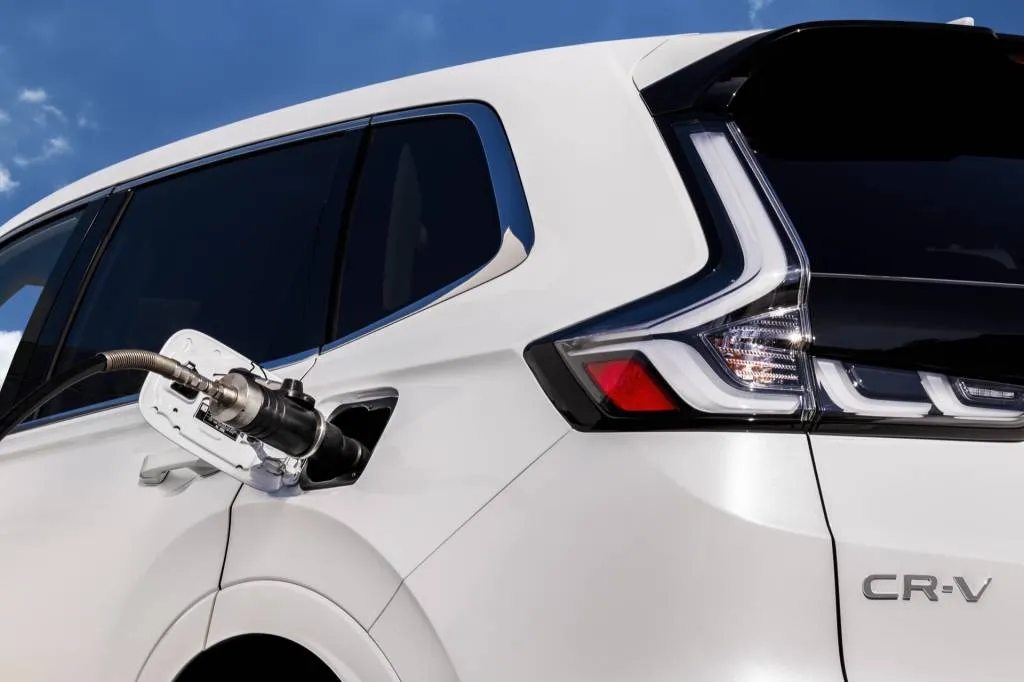
2025 Honda CR-V e:FCEV
The battery pack in the CR-V e:FCEV is 17.7 kwh. Honda hasn’t yet confirmed the chemistry, but notes that it charges at a Level 2 rate as owners might achieve at home—easily amounting to a full charge overnight or during a work day with a 240-volt wallbox or mobile charger.
Once again, finding hydrogen for those longer trips might be the bigger issue. The e:FCEV stores 4.3 kg, significantly less than the 5.5 kg stored by the Honda’s previous Clarity Fuel Cell. According to the U.S. Department of Energy, there are 52 publicly accessible retail hydrogen stations in the U.S. today—all of which are located in California, with most clustered around San Francisco and Los Angeles. Over the past several years several hydrogen supply pinches have left some drivers without reliable fueling points for months; at least in this formulation of a fuel-cell vehicle owners can still travel locally if they have charger access.
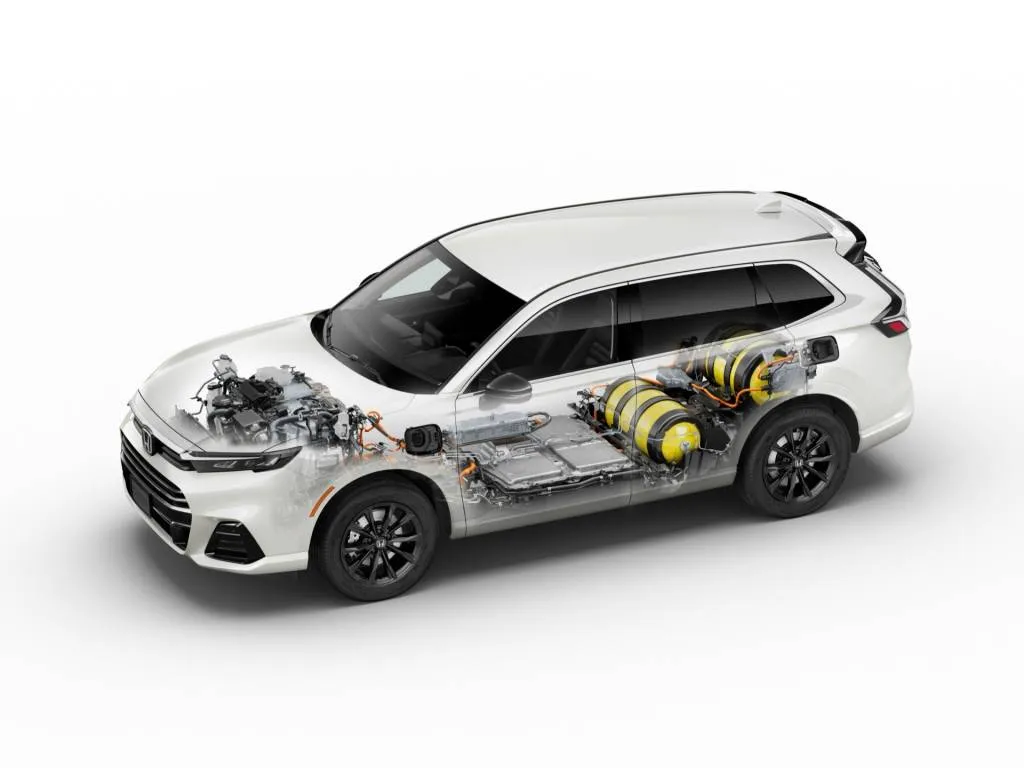
2025 Honda CR-V e:FCEV
The e:FCEV will be the only fuel-cell passenger vehicle made in America—set to be made in Ohio—and it uses the latest fuel-cell module co-developed with GM. Honda claims with this generation of the fuel-cell system to have doubled its durability—and thus, likely, its lifetime in useful miles. It’s also improved low temperature performance “significantly.”
The e:FCEV is powered by a single electric motor at the front wheels, delivering 174 hp and 229 lb-ft of torque. There’s no mention of all-wheel drive. Normal, Eco, Sport, and Snow modes tweak the driving experience, and Honda says that it’s boosted rear rigidity and retuned the multi-link rear suspension. amplitude-sensitive dampers. Don’t expect particularly strong performance; the Accord-sized Clarity Fuel Cell weighed about 600 pounds more than a loaded Accord, so the CR-V could tip the scales at over 4,500 pounds.
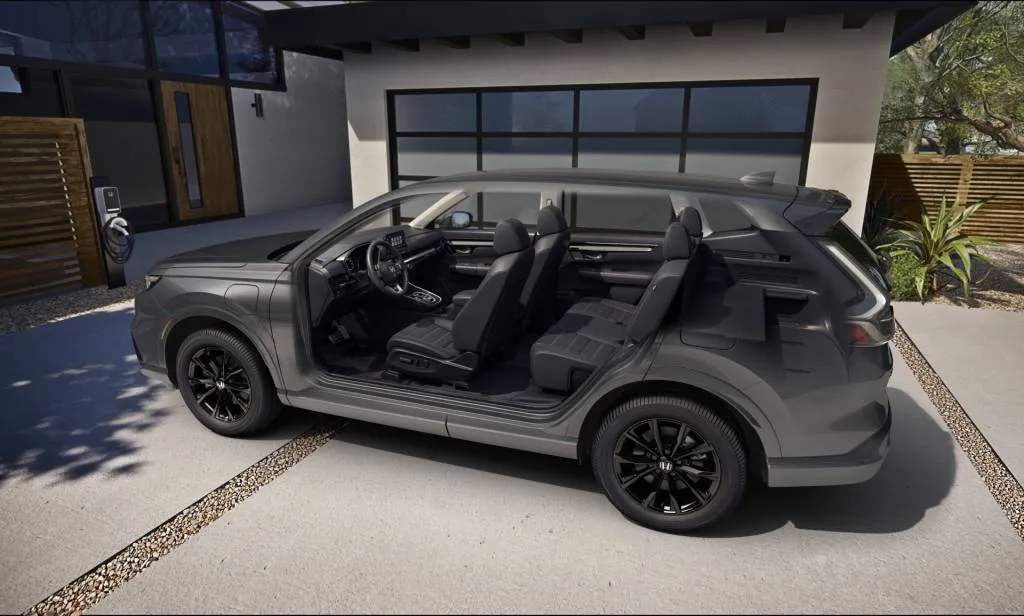
2025 Honda CR-V e:FCEV
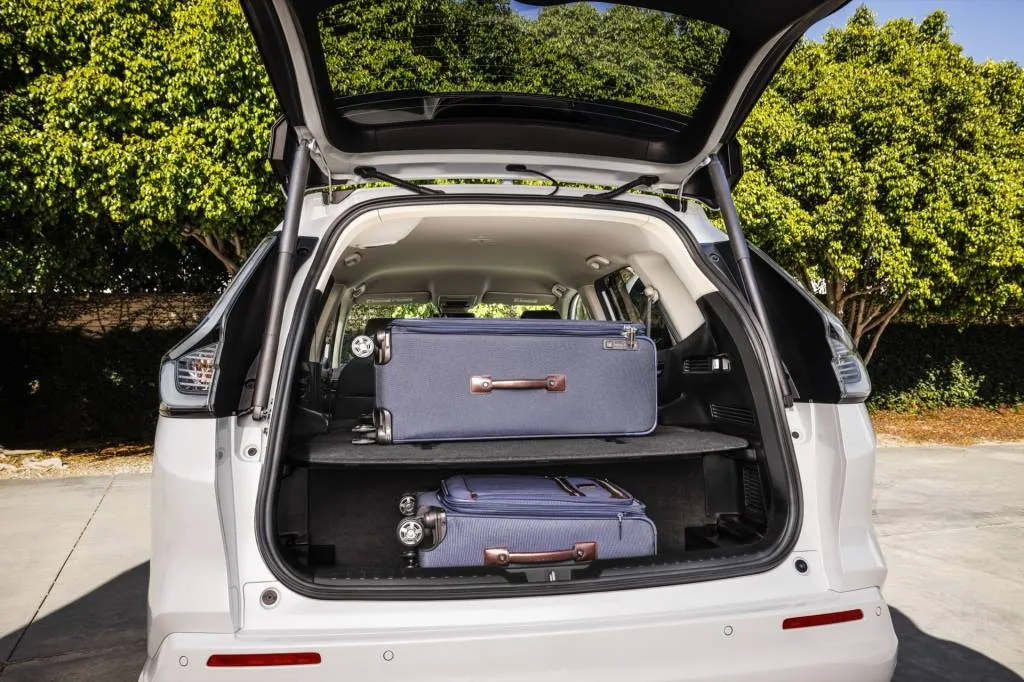
2025 Honda CR-V e:FCEV
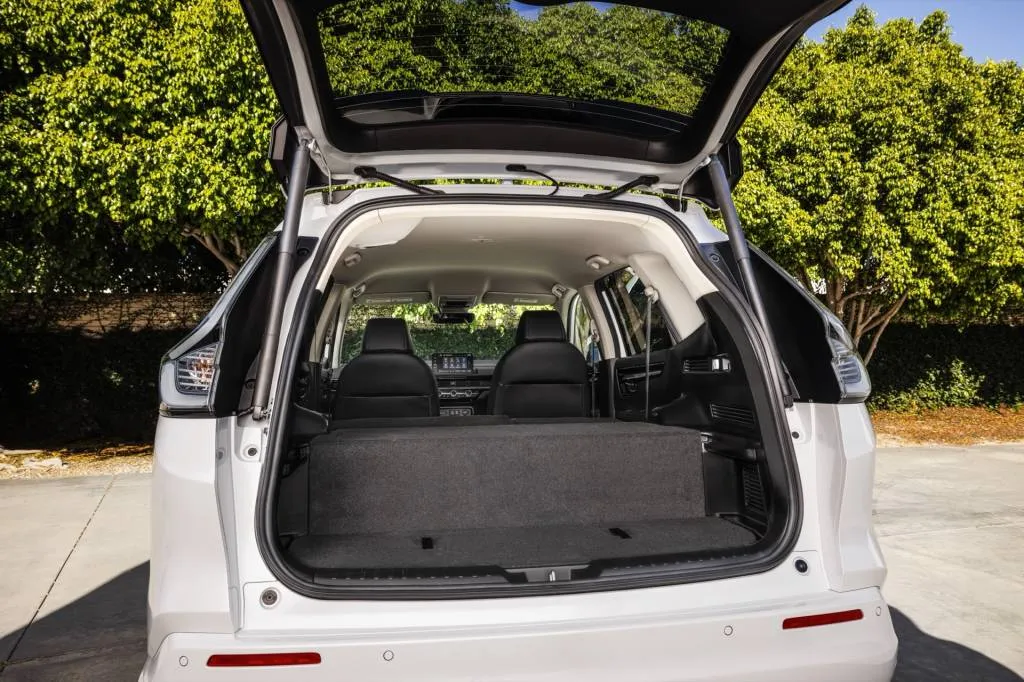
2025 Honda CR-V e:FCEV
Like the 2024 Honda CR-V Hybrid, which Green Car Reports has called Honda’s best gas-driven SUV, the e:FCEV seats five, but a cutaway photo released by Honda shows that hydrogen storage takes up the forward portion of the cargo floor, leaving it with a large step that the automaker has accommodated with a storage shelf for the rear portion. Front- and rear-end styling of the production version, as Honda previewed earlier this month, is a bit softer for this new CR-V variant.
The 2025 CR-V e:FCEV will include a 10.2-inch digital instrument cluster and a 9.0-inch touchscreen with wireless Apple CarPlay and Android Auto compatibility. The automaker has also added hydrogen station information to its HondaLink telematics system, in addition to charger data. Other standard features include wireless phone charging, 12-speaker Bose premium audio, dual-zone climate control, a synthetic leather seating upholstery, and a power tailgate.
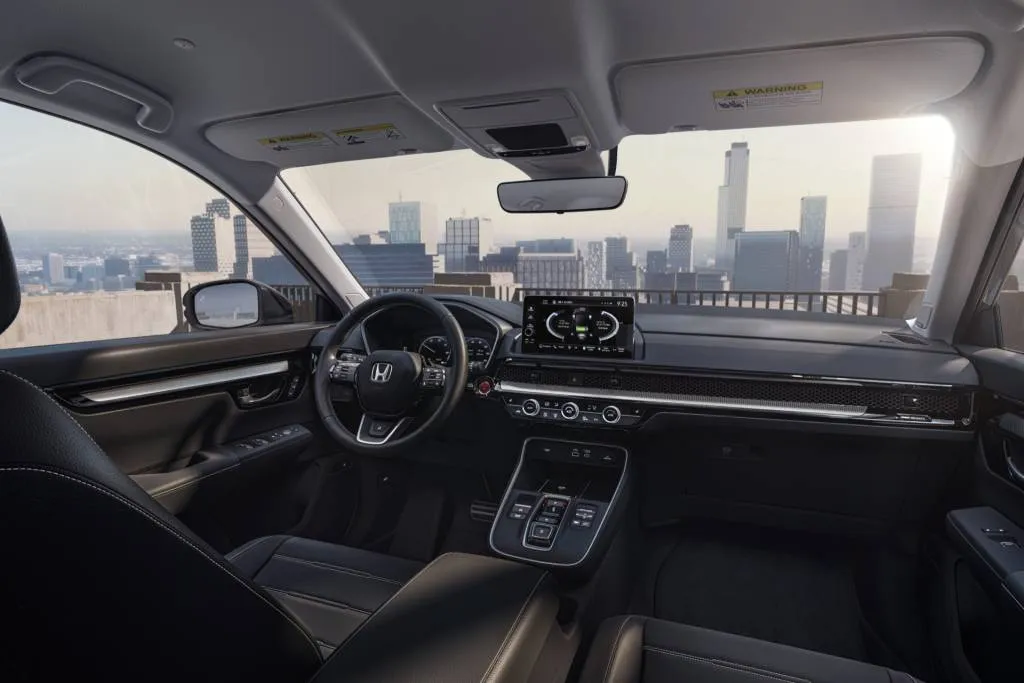
2025 Honda CR-V e:FCEV
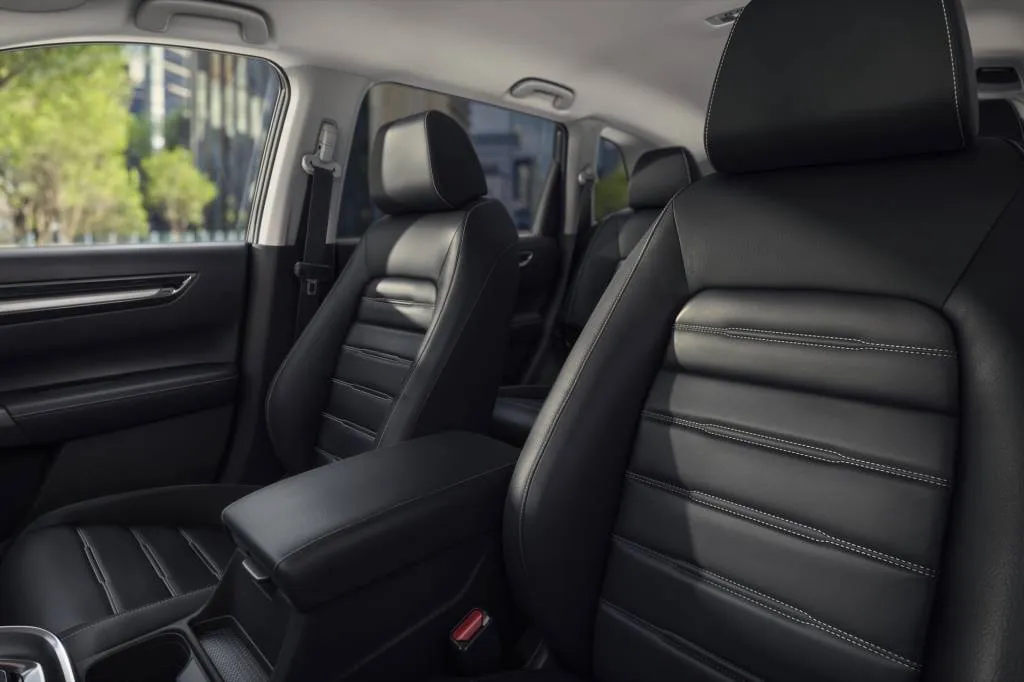
2025 Honda CR-V e:FCEV
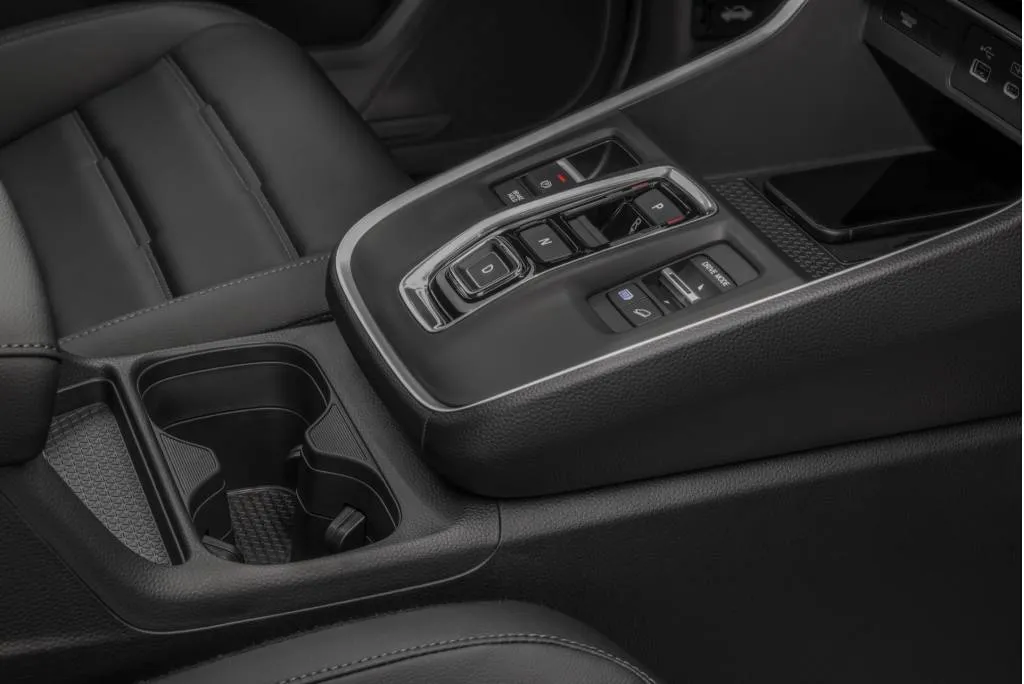
2025 Honda CR-V e:FCEV
An AC power supply will deliver up to 1.5 kw of power at 110 volts, allowing the e:FCEV to run smaller home appliances, portable air conditioners, power tools, or camping equipment, for instance.
The company is working on stationary fuel-cell power stations, as well as a heavy-duty truck concept with Isuzu and a Class 8 fuel-cell semi project for the U.S.
Honda plans to completely phase out internal combustion engines by 2040 and says that by then BEVs and fuel-cell EVs together will represent 100% of its auto sales.

